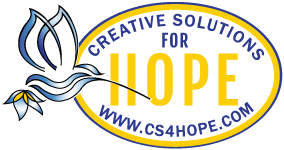
Augmentative and alternative communication or AAC are communication methods that can be used to supplement or replace common communication modes (i.e., writing or speech). AAC can be used with individuals with impairments in the production or comprehension of spoken or written language.
There are various types of AAC systems that can help individuals communicate:
Unaided communication – this communication system does not require any equipment. Typical unaided communicate modes are as follows:
- Vocalizations
- Gestures in the form of body language
- Facial expressions
- Sign
Sign language is a common unaided communication mode that is linguistic based and allows for the individual to express an unlimited number of messages to the listener. Signing can be used alone or could be supplemental to speech as a means of supporting the individual’s communication. One would need to assess or evaluate the individual’s skills in order to identify if sign is the most appropriate communication mode. The individual would need to have an adequate fine motor and motor planning repertoire.
Aided communication – An AAC aid is any “device, either electronic or non-electronic, that is used to transmit or receive messages”. AAC aides could include communication books and speech generated devices. Aided communication modes are very diverse in that they vary greatly in order to support the individual’s needs. Once again, one would need to evaluate the specific skills that the individual has in order to indentify the best mode of communication. Some of the aided communication modes include the following:
- Pictures
- Photographs
- Drawings
- Letters and words
All of these symbols could be used individually or used as a combination in order to help the individual communicate more fluently.
Aided Communication could be broken down into two categories, low-tech and high-tech.
Low-tech: these are communication aides that do not require batteries, electricity or electronics. Most of the type these communication aides are very simple, they could be in the form of communication boards or books. The individual would use these boards or books that have letters, words, phrases, pictures and/or symbols on them in order to communicate their wants, needs and emotional state.
High-tech: these are communication aides that allow for the storage and retrieval of electronic messages. Most of these types of devices allows for the individual to communicate by using speech output through the device. These types of devices are typically called speech generated devices or SGD. They could also be known as voice output communication aides or VOCA. High-tech devices could be used in a various ways, depending on the skills of the user. The individual communicating may need to use symbols that are programmed into the device or they could communicate through the means of typing with letters. Symbol selection or typing could be used individually or in combination in order to help the individual communicate more efficiently.
How do you know what type of AAC method is the best for that individual? – It would be important to evaluate and assess the individual’s specific abilities. One would need to evaluate for motor, visual, cognitive, language and communication strengths and deficits before identifying the right type of AAC method. It is important to remember that each individual is unique; therefore identifying a mode of communication that is most beneficial and effective in helping that individual express their wants, needs and emotions is the best route to take.
Some helpful resources:
- http://ittautism.org/
- http://www.cp-center.org/assistive/
- http://www.praacticalaac.org/
- http://www.asha.org/public/speech/disorders/AAC.htm
Resource
“Augmentative and Alternative Communication.”Wikipedia. n.p., n.d., Fri. 26 Apr. 2013.
